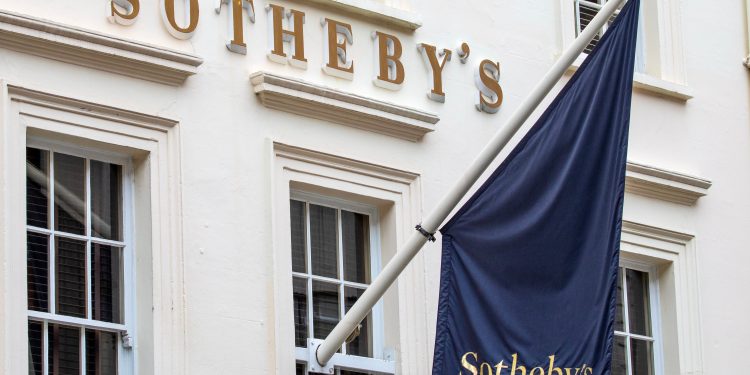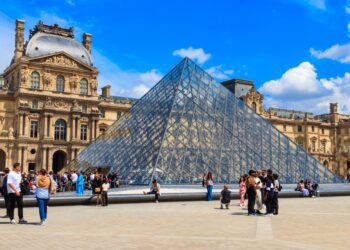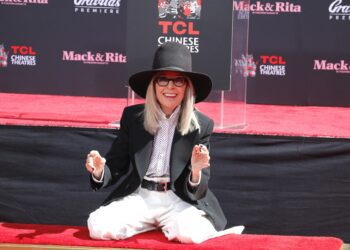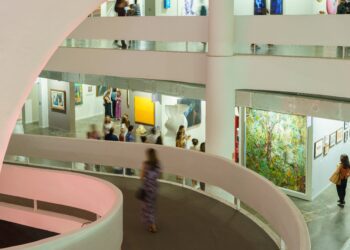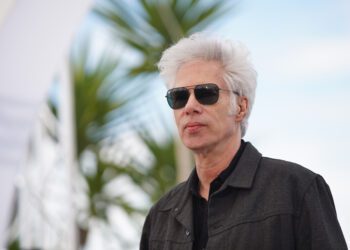Sotheby’s three-part evening sale on Thursday in New York generated a total of $186.1 million on 68 lots, coming towards the high end of its $141 million to $204.9 million estimate. The result, while higher than a similar sale in November, was still a notable 18 percent drop from the equivalent sale last May, which generated $227.9 million.
That solid, if unspectacular, top result reflected the broader trend across this week’s marquee sales: strong demand for blue-chip works, and more cautious interest in younger and mid-career artists. Across two focused offerings and a broader contemporary sale, buyers bid aggressively for works with strong provenance or institutional appeal, but were more cautious elsewhere. (All quoted prices include buyer’s fees unless otherwise noted.)
Sotheby’s started the night with a focused 12-lot sale of works from the collection of influential gallerist Barbara Gladstone, who died last year. All 12 works, which hit the block without guarantees, sold, with eight of the lots exceeding their high estimates. The Gladstone sale totalled $18.5 million, just above the $17.2 million high estimate.
Two Richard Prince paintings carried the sale’s weight financially, bringing in $7.5 million with fees, constituting around 40 percent of the first sale’s total. Prince’s 2002–2003 painting Man Crazy Nurse, however, sold for a shade under $4 million—well below the $12.1 million record for a “Nurse” series work, set at Sotheby’s Hong Kong in 2021.
The Gladstone sale was followed by a 15-work, all-guaranteed sale from renowned dealer Daniella Luxembourg, with a strong focus on postwar Italian artists, particularly those linked to Arte Povera. That sale provided the most fireworks, with sales moving swiftly and at high levels.
The opening lot of the Luxembourg sale, the Lucio Fontana sculpture Concetto spaziale (1962-1963), sold for $764,000 to a bidder in the room, over six times its $180,000 high estimate, with five bidders pursuing the work. Two lots later, Michelangelo Pistoletto’s 1969 mirror painting Maria Nuda, an image of a reclining brunette girl, provided one of the most competitive moments of the evening. After a five-minute bidding war between eight bidders, the work sold for $2.7 million, more than double its $1.5 million high estimate.
“That deserves a round of applause, doesn’t it?” auctioneer and Chairman of Sotheby’s Europe, Oliver Barker, said, leaning over the rostrum, as the crowd clapped.
Concetto spaziale, La fine di Dio, a 1963 oil and glitter painting by Lucio Fontana, was the highest seller in this group, achieving $14.5 million, squarely in the middle of its $12 million to $18 million estimate.
For Italian art dealer Mattia De Luca, who runs an eponymous gallery in Rome, the Luxembourg sale represented a unique opportunity to acquire truly rare works from artists like Fontana and Pistoletto.
“The Luxembourg sale really proved that top quality works will withstand these tough times in the art market,” De Luca told ARTnews. “When the quality is high, and the works are priced well with the estimate—which I think they were—they do well.”
Other notable results from the Italian session included Alberto Burri’s 1976 painting, which sold for $3.1 million with no published estimate, and Claes Oldenburg’s 1969 soft sculpture, which exceeded its $1.5 million high estimate with a final price of $1.94 million. A rare 1959 bandage-based piece by Salvatore Scarpitta sold for $1.08 million, below its high estimate of $1.2 million. Joseph Kosuth’s 1965 light piece sold for $190,000, above its $150,000 high estimate. A sculpture by Pino Pascali, estimated at $400,000 to $600,000, also drew strong interest and sold for $1.64 million, nearly triple the high estimate. Two Alexander Calder mobiles also exceeded estimates. Armada (1946), estimated at $5 million, sold for $5.4 million, while the 1948 work The Beetle brought in $4.2 million against a $4 million high estimate.
After the sale, Lucius Elliot, the house’s head of contemporary marquee sales, indicated that provenance was a key contributor to the success of the Gladstone and Luxembourg lots.
“At a time like this, and generally, people look at provenance as a signal of quality,” Elliot told ARTnews. “There is something to be said for the halo effect created by a collection, and the reassurance to know that you’re buying from someone who had such a long time and such a discerning eye to choose what it was they wanted to buy over all those years.”
The top price of the evening came during the Now sale for a 1981 Jean-Michel Basquiat oil stick on paper work that had been held in the same collection for 30 years. Estimated at $10 million and backed with a guarantee, the piece hammered at $13.7 million—more than 30 percent above its low estimate, landing at $16.4 million with fees.
Multiple Roy Lichtenstein works also performed strongly. Bonsai Tree (1993) more than doubled its low estimate of $1.5 million, selling for $4.2 million. Two other Lichtenstein paintings from 1988 and 1996 sold for $5.5 million and $4.9 million respectively, both solidly within their estimate ranges.
Read the full article by Angelica Villa, Harrison Jacobs / ART NEWS

